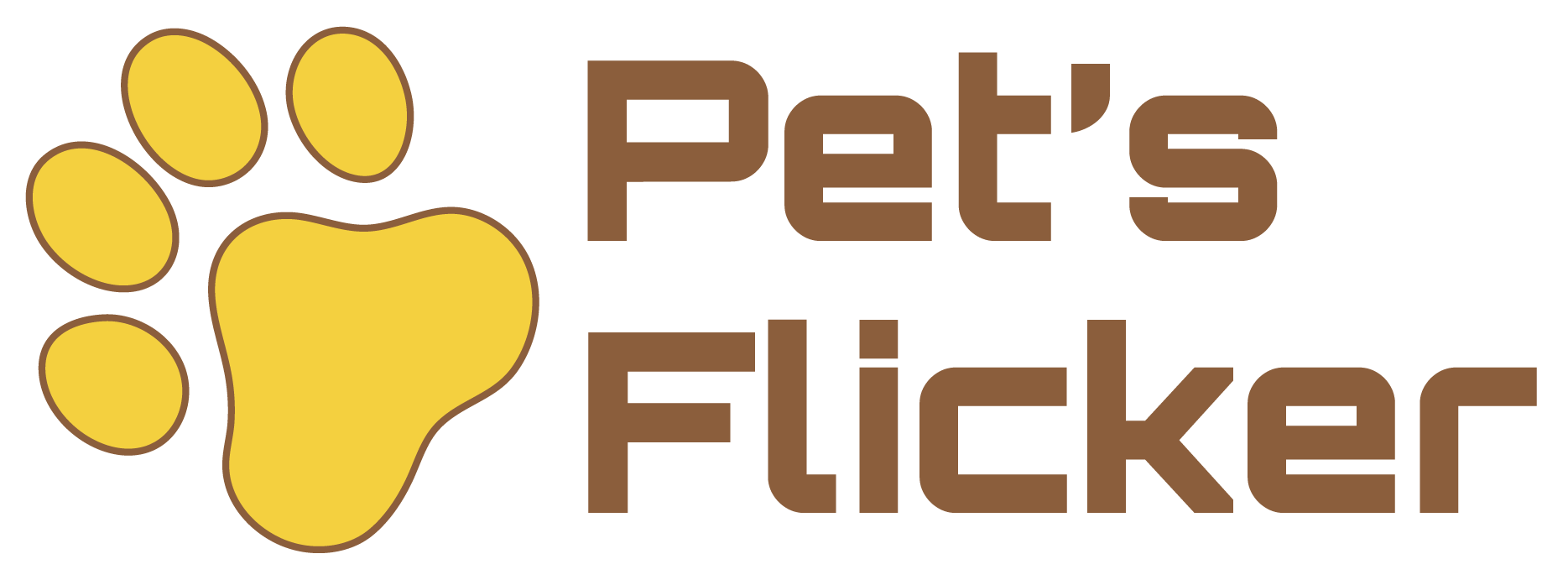10 Best Dog Grooming Tips for a Healthy, Shiny Coat
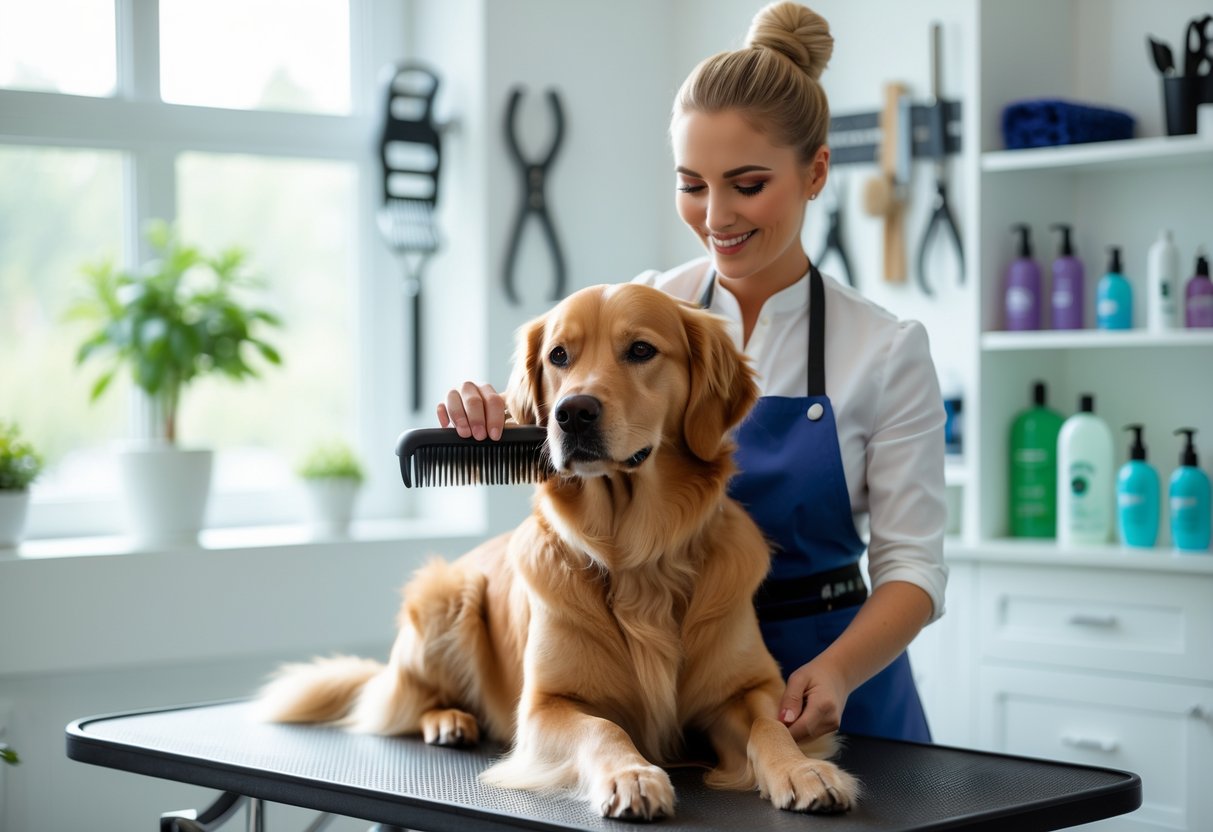
Taking care of a dog’s coat and hygiene is important for their health and comfort. Proper grooming helps prevent skin problems, keeps the dog clean, and can make them feel better overall.
Good grooming habits also help build a strong bond between pet and owner while making the dog look and feel its best. This article shares practical tips to keep dogs well-groomed without needing frequent professional help.
1) Brush your dog’s coat daily to remove dirt and prevent tangles.
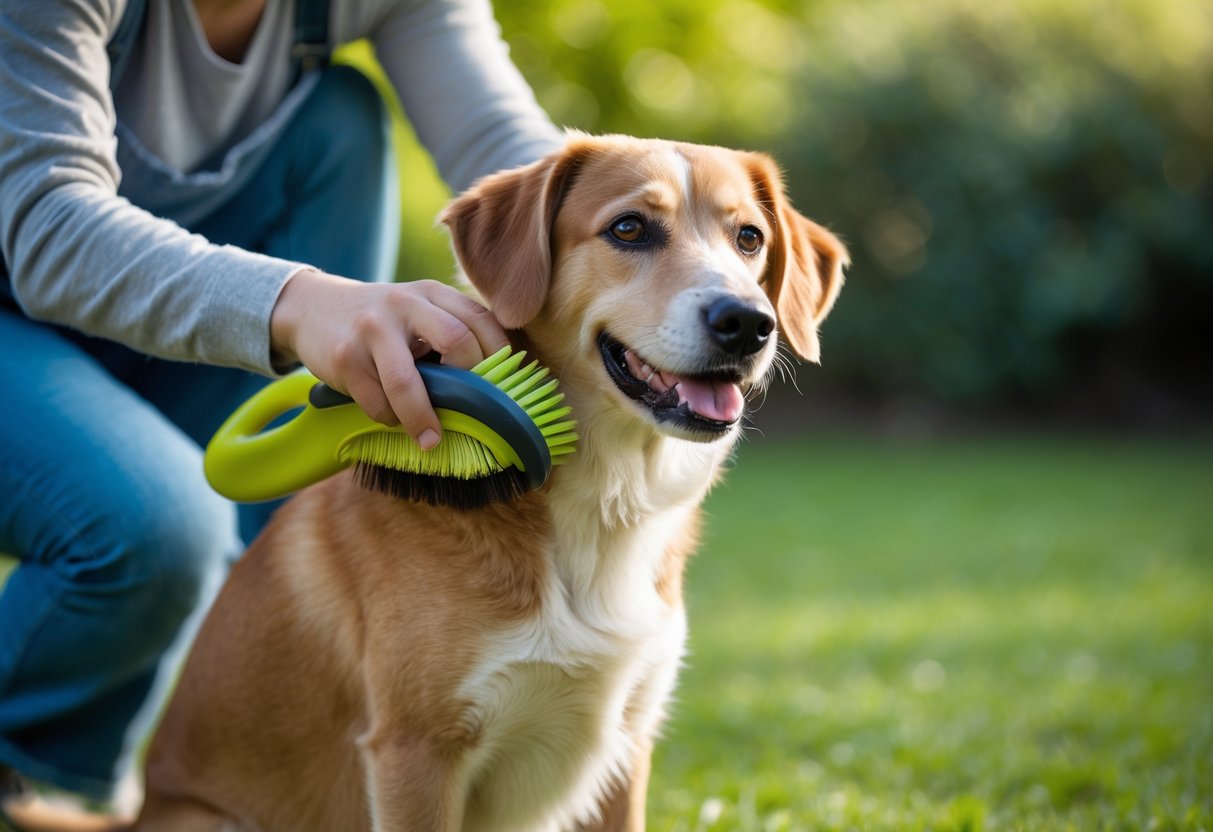
Brushing a dog’s coat every day helps keep it clean by removing dirt and loose hair. This is especially important for dogs with long or thick fur that can easily get tangled.
Regular brushing stops mats from forming. Mats pull on the skin and can cause discomfort or irritation. Using the right brush type for the dog’s coat makes the process more effective.
Daily grooming also spreads natural oils across the fur. This keeps the coat shiny and healthy. It gives owners a chance to check the skin for any problems like bumps or fleas.
Even short-haired dogs benefit from regular brushing. It helps reduce shedding and keeps their coat neat. Making brushing a daily habit helps dogs stay comfortable and well-groomed.
2) Use a slicker brush for dogs with long or curly hair
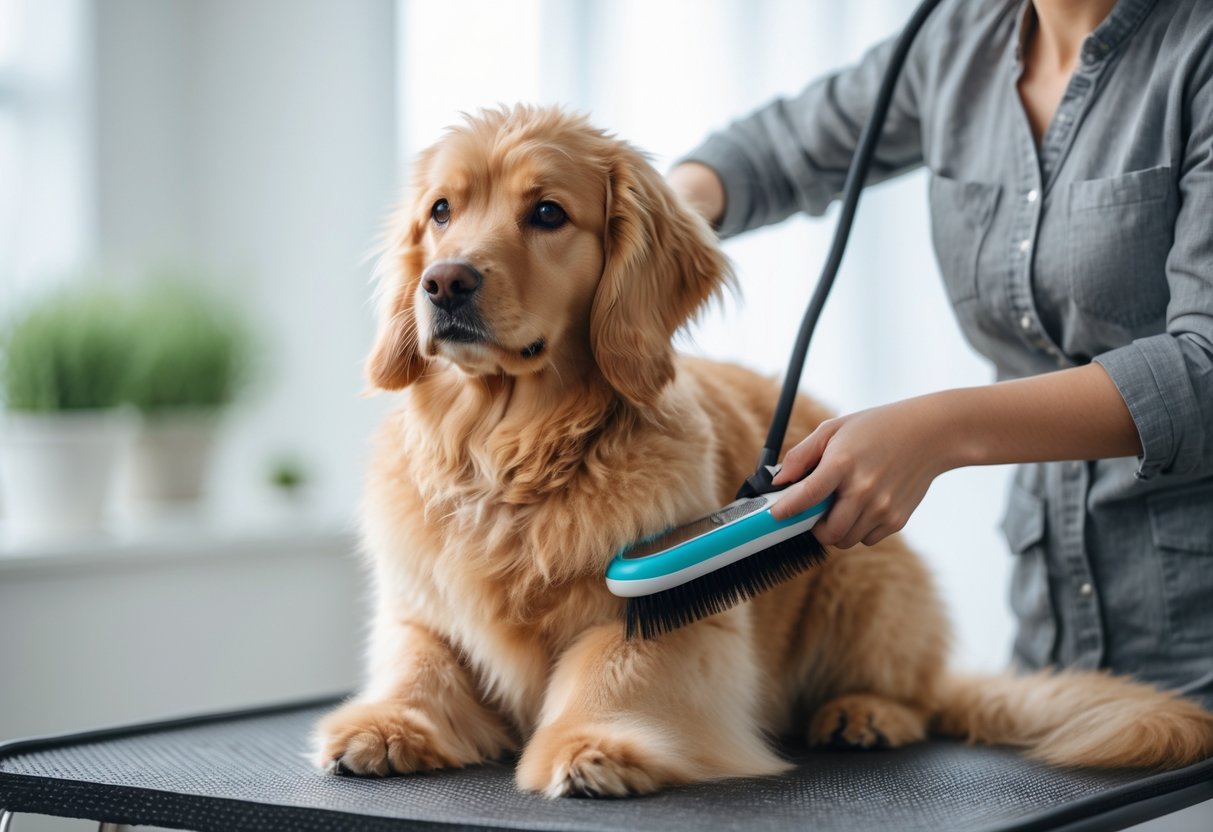
A slicker brush is ideal for dogs with long or curly hair. It helps remove tangles, mats, and dead hair. This keeps the coat smooth and healthy.
The brush has fine, bent pins that reach deep into the fur. This makes it easier to clear knots without hurting the dog. It works well on double coats and thick fur.
Using the slicker brush regularly stops mats from forming. After brushing, switching to a bristle brush can help smooth the coat. Groomers suggest using it gently to avoid irritating the skin.
Choosing the right size slicker brush based on the dog’s size and coat type improves grooming results. It is a useful tool for maintaining a clean, tangle-free coat.
3) Bathe your dog every 4-6 weeks with a gentle, dog-specific shampoo.
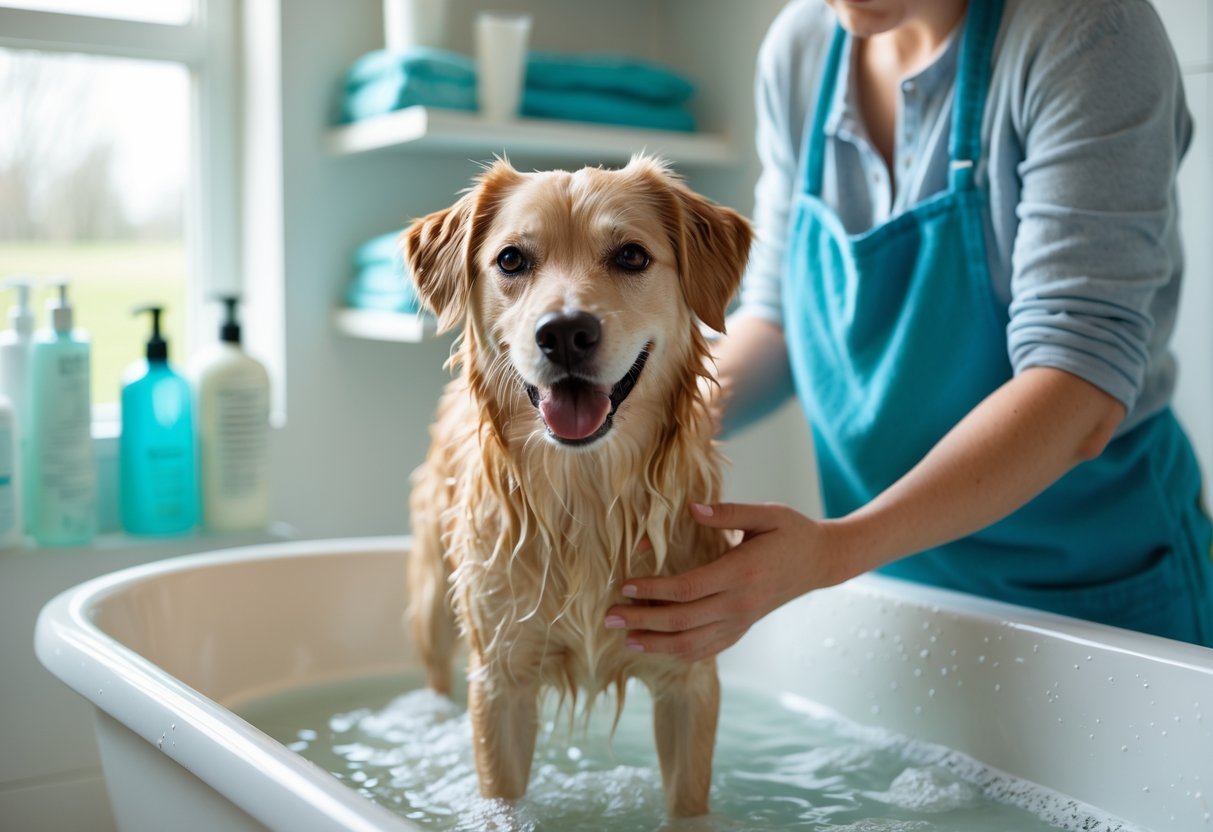
Bathing a dog too often can remove natural oils that protect their skin. Most dogs do well with a bath every 4 to 6 weeks. This schedule helps keep the dog clean without causing skin problems.
Using a shampoo made for dogs is important. Human shampoos can irritate their skin. Gentle, dog-specific shampoos help maintain the natural balance of oils.
Some dogs may need baths more often if they have oily skin or get dirty regularly. Dogs with sensitive or dry skin should have fewer baths and use medicated shampoos if needed.
Signs that a bath is needed include a bad odor, visible dirt, or a greasy coat. Regular bathing supports a healthy coat and comfortable skin.
4) Trim nails regularly using a dog nail clipper or grinder.
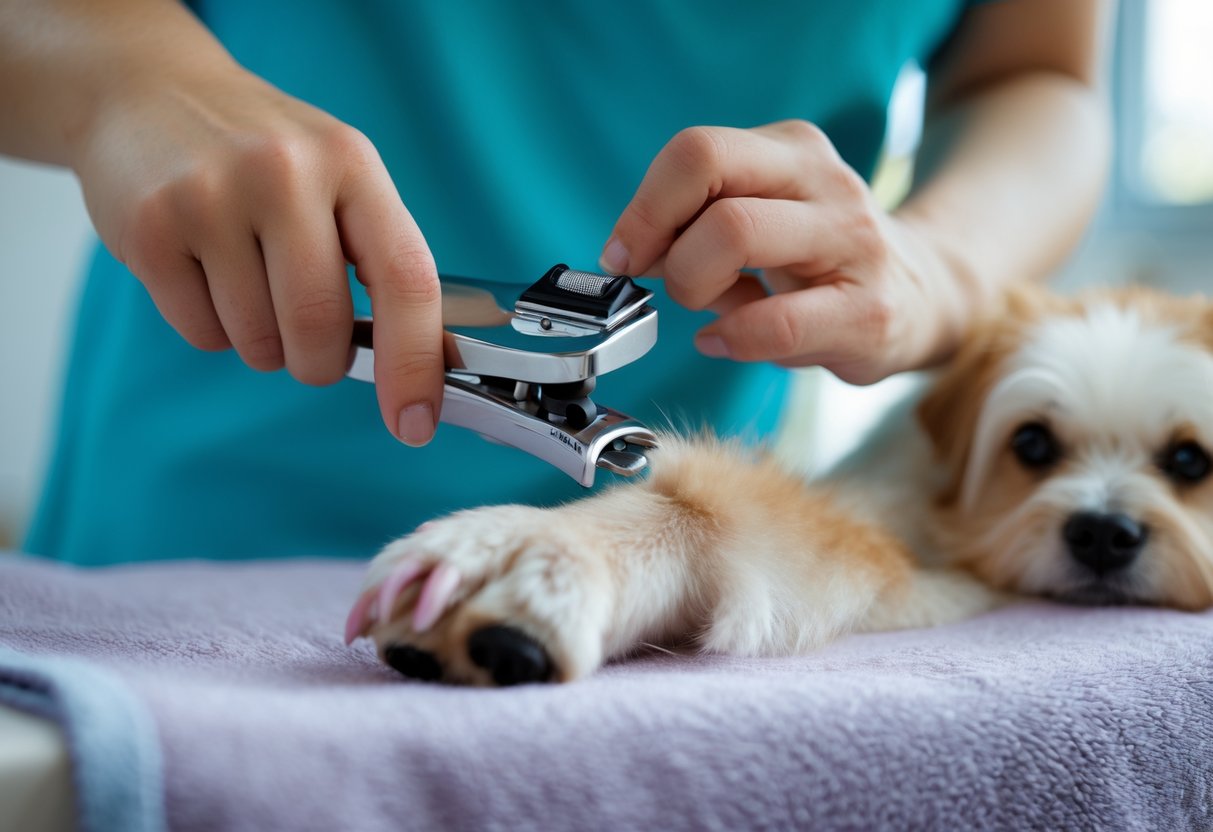
Trimming a dog’s nails is important for their comfort and health. Long nails can cause pain and affect the way a dog walks. Owners should check nails often and trim them before they grow too long.
There are two main tools to trim nails: nail clippers and grinders. Clippers come in scissor or guillotine styles. They cut the nail quickly but require careful handling to avoid cutting too deep.
Grinders use a rotating file to slowly shorten the nails. They are good for smoothing rough edges and can be less scary for dogs sensitive to noise. Choosing the right tool depends on the dog’s size and behavior.
Safety is key. Using sharp, clean tools and trimming little by little helps prevent injury. If unsure, it can help to ask a vet or groomer for advice.
5) Clean your dog’s ears weekly with a vet-approved ear cleaner
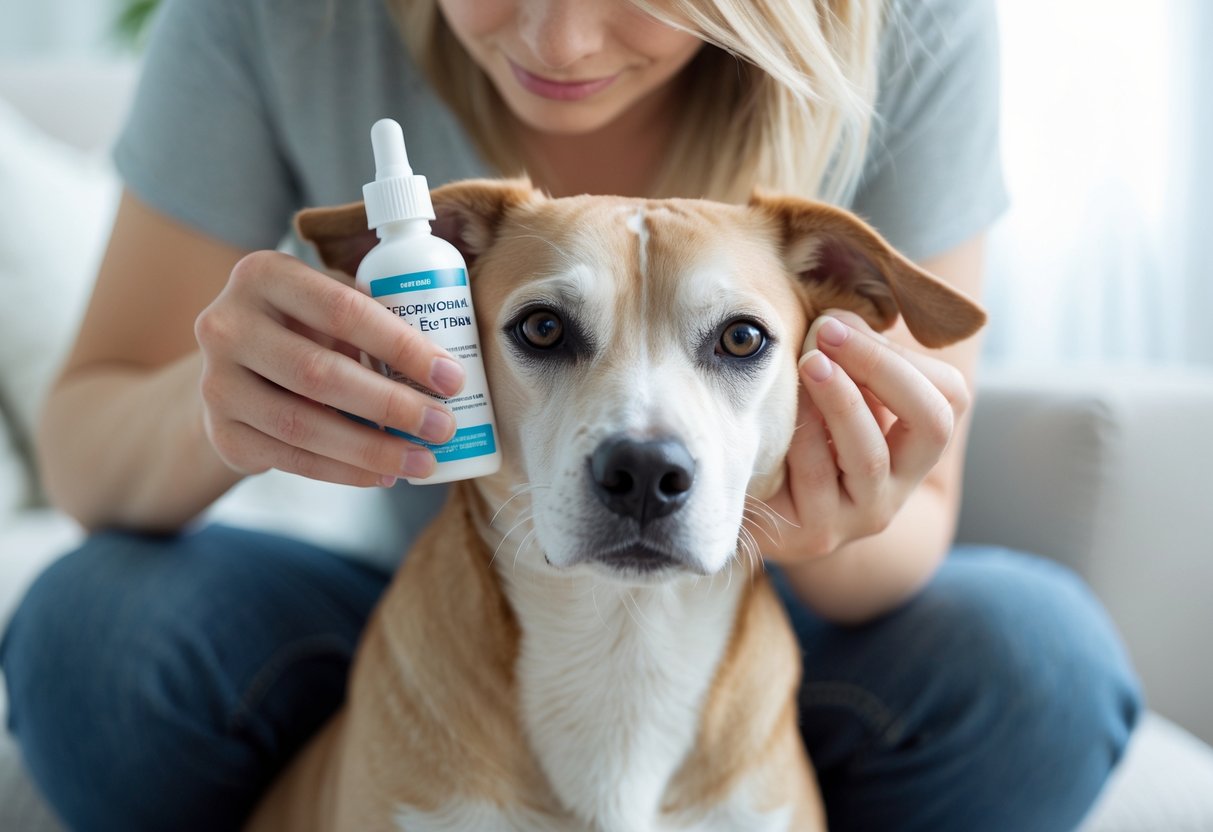
Cleaning a dog’s ears is important to prevent infections and buildup of wax, dirt, and yeast. Dogs with floppy or heavy ears often need more attention because their ears can trap moisture. Weekly cleaning helps keep ears dry and healthy.
Using a vet-approved ear cleaner is the safest way to clean your dog’s ears. These products are made to gently remove debris without causing irritation. Avoid using cotton swabs inside the ear canal to prevent injury.
After swimming, bathing, or rainy days, ears should be checked and cleaned if needed. Regular cleaning can reduce the risk of infections caused by bacteria and fungi. Following your veterinarian’s advice on cleaning frequency is best for your dog’s ear health.
6) Brush your dog’s teeth daily or at least several times a week to prevent dental issues.
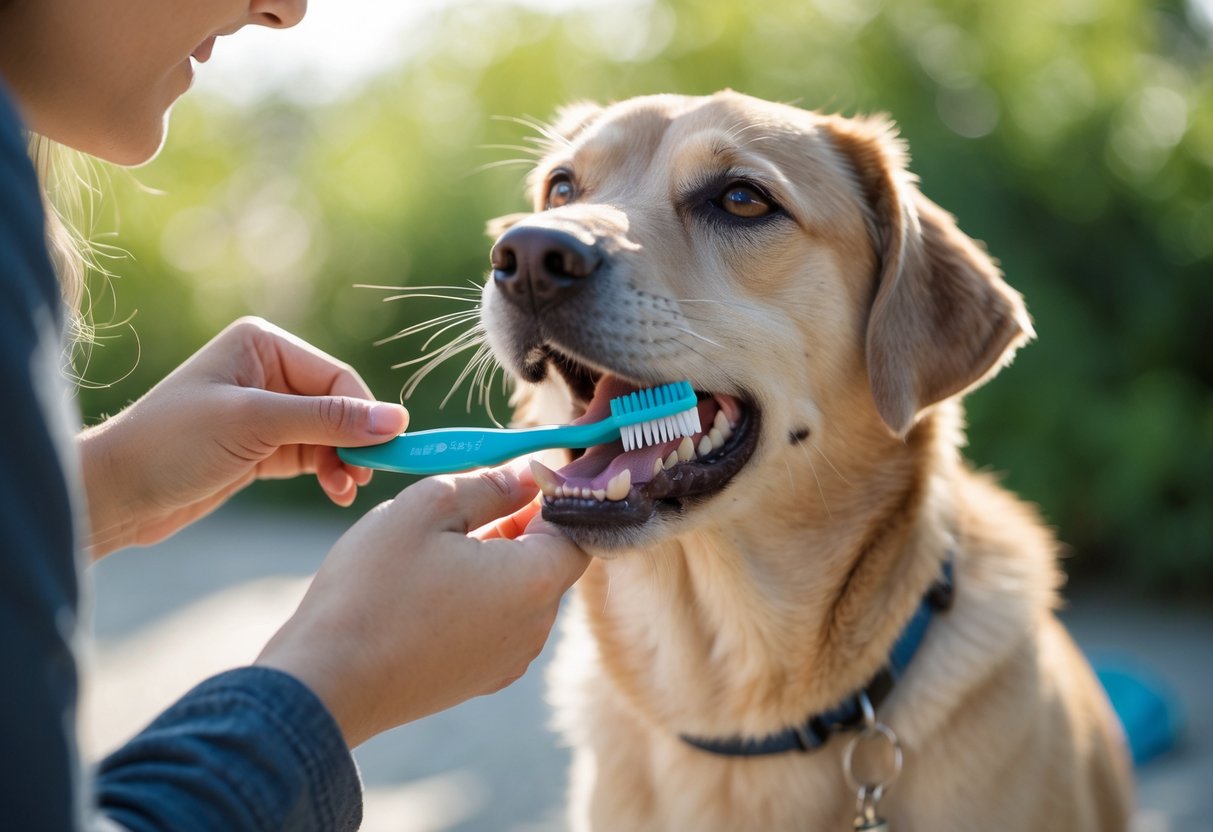
Brushing a dog’s teeth every day is the best way to keep their mouth clean. If daily brushing is not possible, brushing at least three to four times a week can still help prevent dental problems.
Regular brushing removes plaque before it hardens into tartar. This reduces the chance of gum disease, bad breath, and tooth loss. It also helps dogs avoid pain caused by dental infections.
Using a toothbrush and toothpaste made for dogs makes brushing easier and safer. Many dogs get used to brushing quickly when it becomes part of their routine. Veterinary advice can guide how to brush gently and effectively.
Along with brushing, dental chews and professional cleanings support oral health. Good dental care helps a dog stay healthier and more comfortable overall.
7) Check for fleas and ticks during grooming sessions and use appropriate treatments.
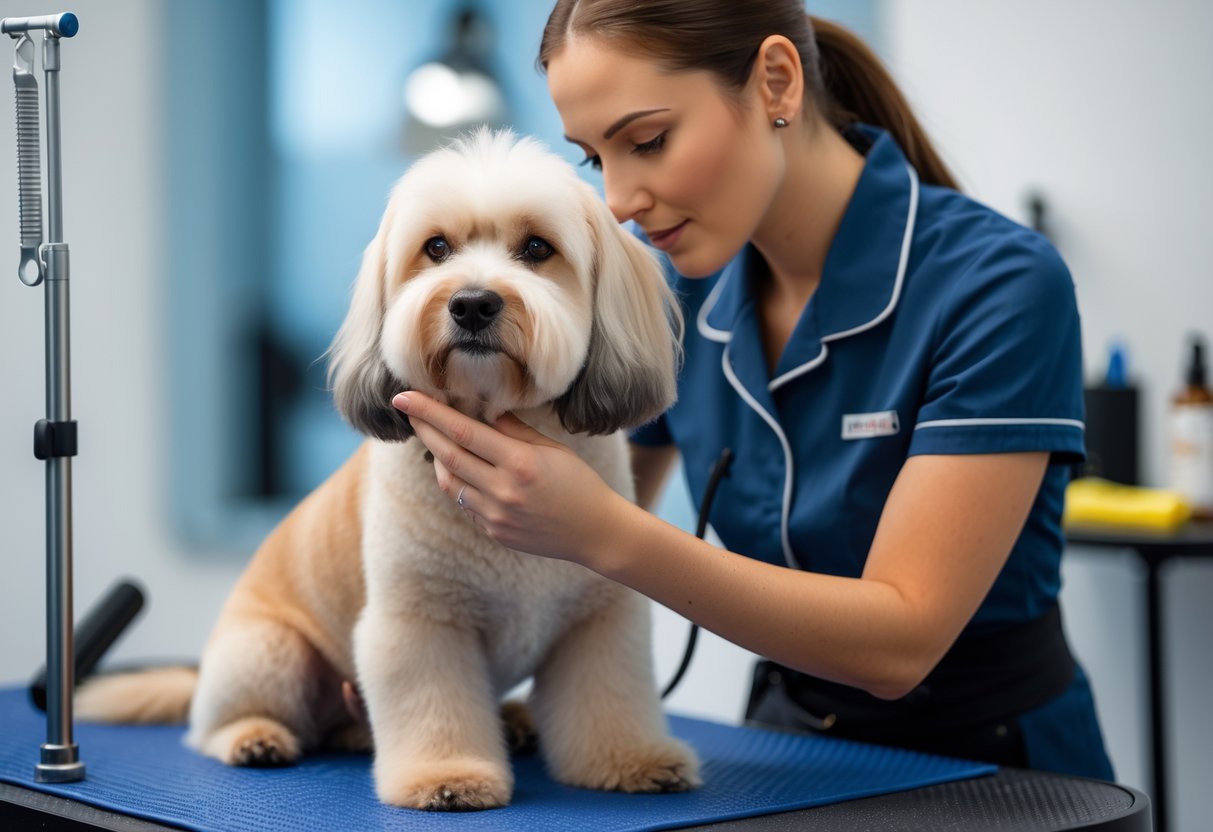
During grooming, it is important to check a dog’s fur and skin for fleas and ticks. These parasites often hide in places like behind the ears, between the toes, and around the tail.
Using a fine-toothed comb helps find fleas, flea dirt, and ticks early. Regular checks can prevent infestations from getting worse.
If fleas or ticks are found, appropriate treatment should be used. This may include topical medicines, oral drugs, or special shampoos designed to kill parasites.
Prompt action helps keep the dog comfortable and healthy. It also reduces the risk of diseases that fleas and ticks can spread.
Regular grooming sessions are a good chance to catch these pests early. This keeps the dog clean and reduces the chances of parasites causing problems.
8) Use a deshedding tool like the Furminator for heavy shedding breeds.
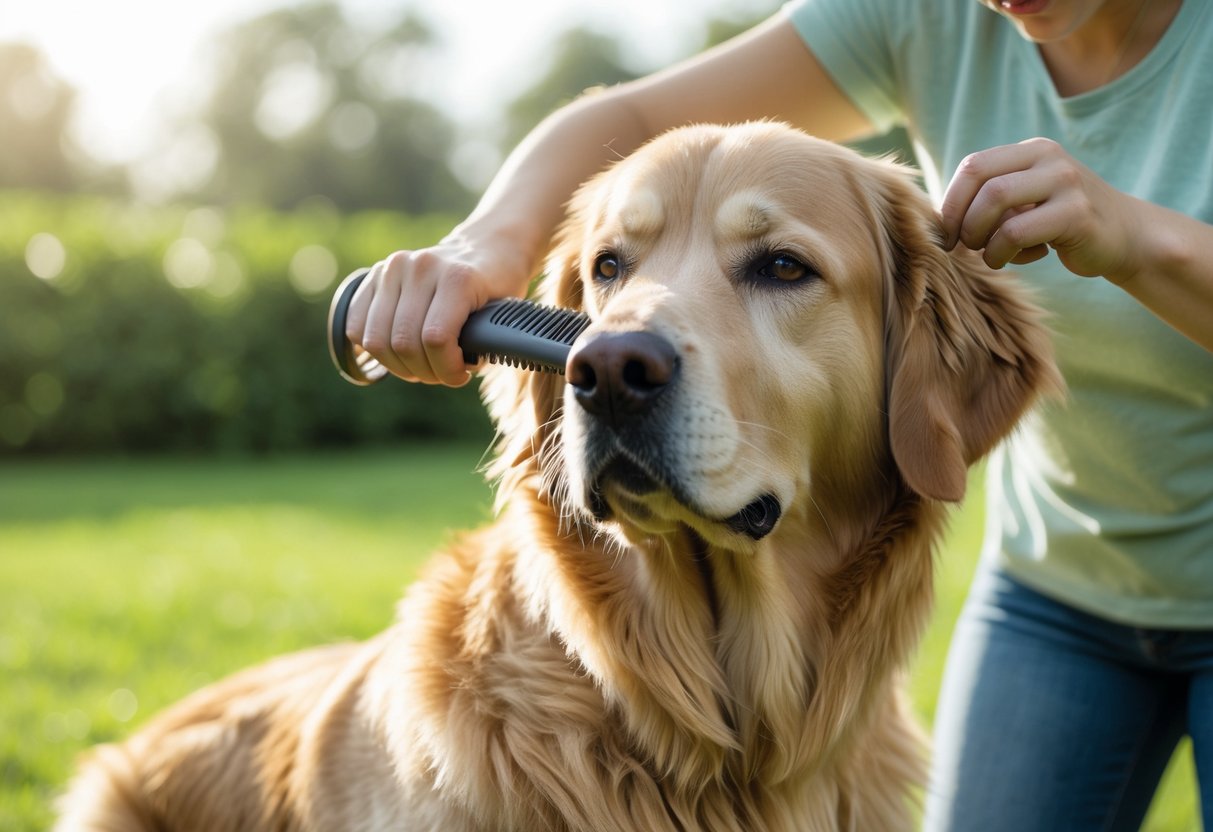
Heavy shedding breeds benefit from deshedding tools that remove loose fur beneath the topcoat. The Furminator is a popular choice because its stainless-steel teeth reach deep to lift dead hair without damaging the coat.
Using a deshedding tool regularly helps reduce the amount of hair left around the house. It also keeps your dog’s coat healthier by stopping mats and tangles before they form.
It is important to use the right size tool for the dog’s coat length and thickness. Overuse or too much pressure can irritate the skin, so gentle, short sessions are best.
Deshedding tools work well with other grooming methods like brushing and bathing. Together, they make grooming easier and more effective for dogs that shed heavily.
9) Dry your dog thoroughly after baths to avoid skin irritation.
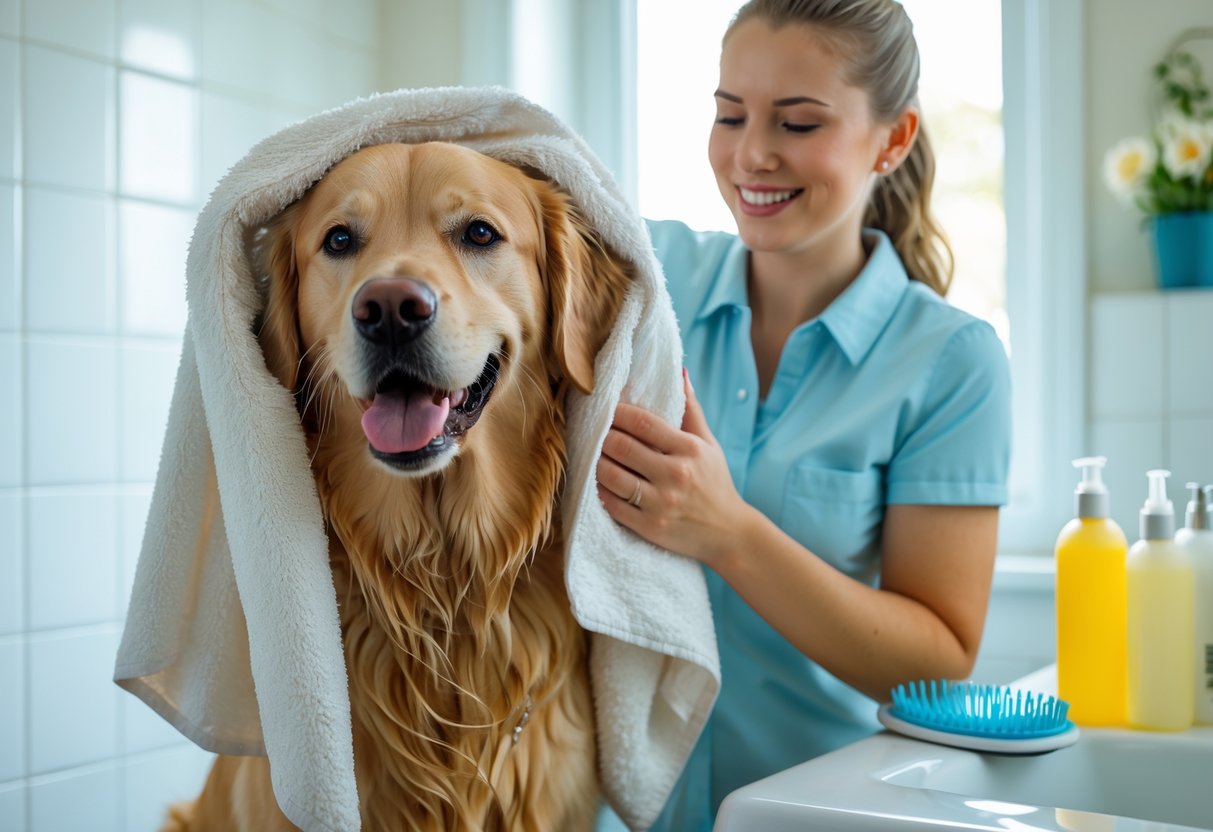
After bathing, it is important to dry your dog thoroughly. Leaving moisture in the fur or on the skin can cause irritation. It can also create a place for bacteria and fungi to grow.
Using a towel first helps remove most of the water. For dogs with thick or long coats, a blow dryer on a low, cool setting can speed up drying. Avoid high heat because it can dry out or burn the skin.
Some dogs may not like blow dryers, so be patient and keep the process calm. Make sure to check areas like under the ears, belly, and between the toes. These spots tend to stay damp longer.
Proper drying helps prevent discomfort, itching, and skin problems. It also keeps the dog’s coat healthy and clean after each bath.
10) Use grooming scissors to trim hair around the eyes and paws safely
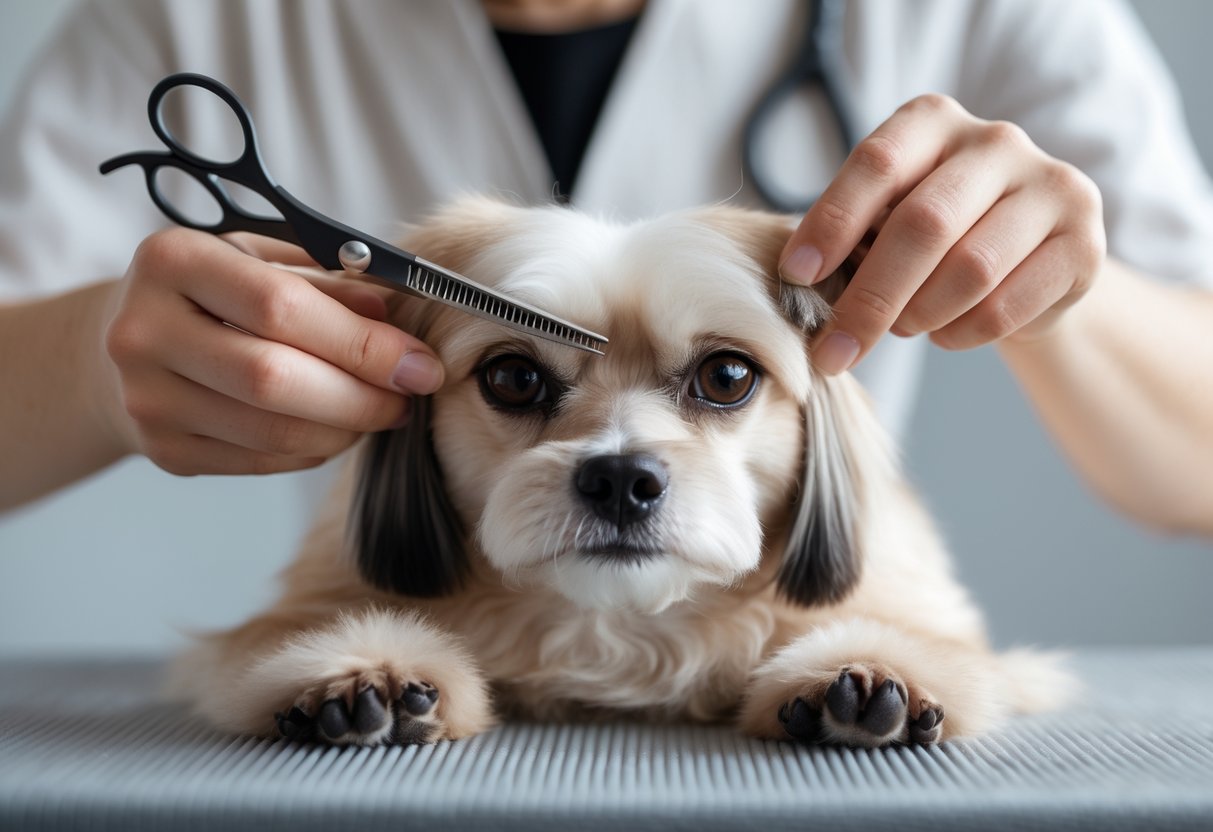
Trimming hair around a dog’s eyes and paws requires care and the right tools. Grooming scissors designed for pets are best because they are small, sharp, and safe to use near sensitive areas.
Before trimming, it helps to calm the dog and gently comb the fur. This makes it easier to see which hairs need cutting. For the eyes, scissors with rounded tips reduce the risk of accidental pokes or cuts.
When trimming paws, straight grooming scissors work well for cutting hair along the edges. Thinning scissors can soften the hair between the toes for a cleaner look. It is important to trim slowly and carefully to avoid hurting the dog.
Keeping the dog still and rewarding them afterward helps make the process safe and more comfortable. This prevents stress and helps the dog stay calm during future grooming sessions.
Benefits of Proper Dog Grooming
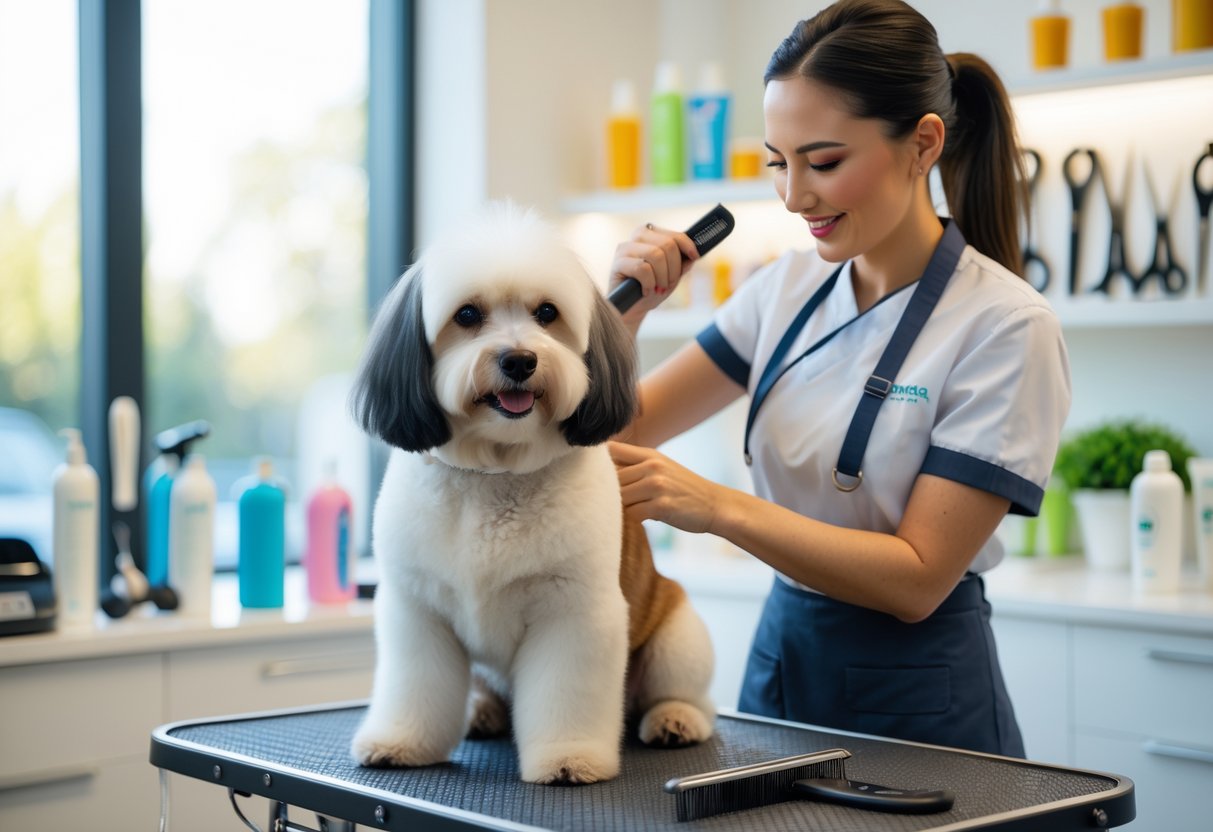
Proper grooming offers more than just a cleaner appearance. It plays a key role in a dog’s overall health and helps strengthen the connection between owner and pet. Grooming should be part of a regular routine to ensure both physical and emotional benefits.
Impact on Canine Health
Regular grooming helps keep a dog’s skin and coat healthy. Brushing removes dirt, dead hair, and loose fur, which reduces the risk of skin infections and matting. It also helps spot issues like ticks, fleas, or lumps early.
Bathing with the right shampoo maintains skin moisture and prevents dryness or irritation. Nail trimming reduces pain and prevents issues with walking. Cleaning a dog’s ears can stop infections by removing wax and debris.
Proper grooming improves their comfort and lessens shedding indoors. Well-maintained coats regulate body temperature better, helping dogs stay comfortable in different weather.
Enhancing Bonding with Your Dog
Grooming can deepen the bond between a dog and its owner. It requires gentle touch and close interaction, which builds trust. Dogs often feel relaxed and cared for during grooming sessions.
When owners groom their dogs regularly, they learn to read signs of discomfort or health problems. This awareness strengthens communication and care.
By making grooming a positive experience, dogs become more cooperative over time. It also creates a routine that owners and pets can enjoy together, improving their relationship overall.
Choosing the Right Grooming Tools
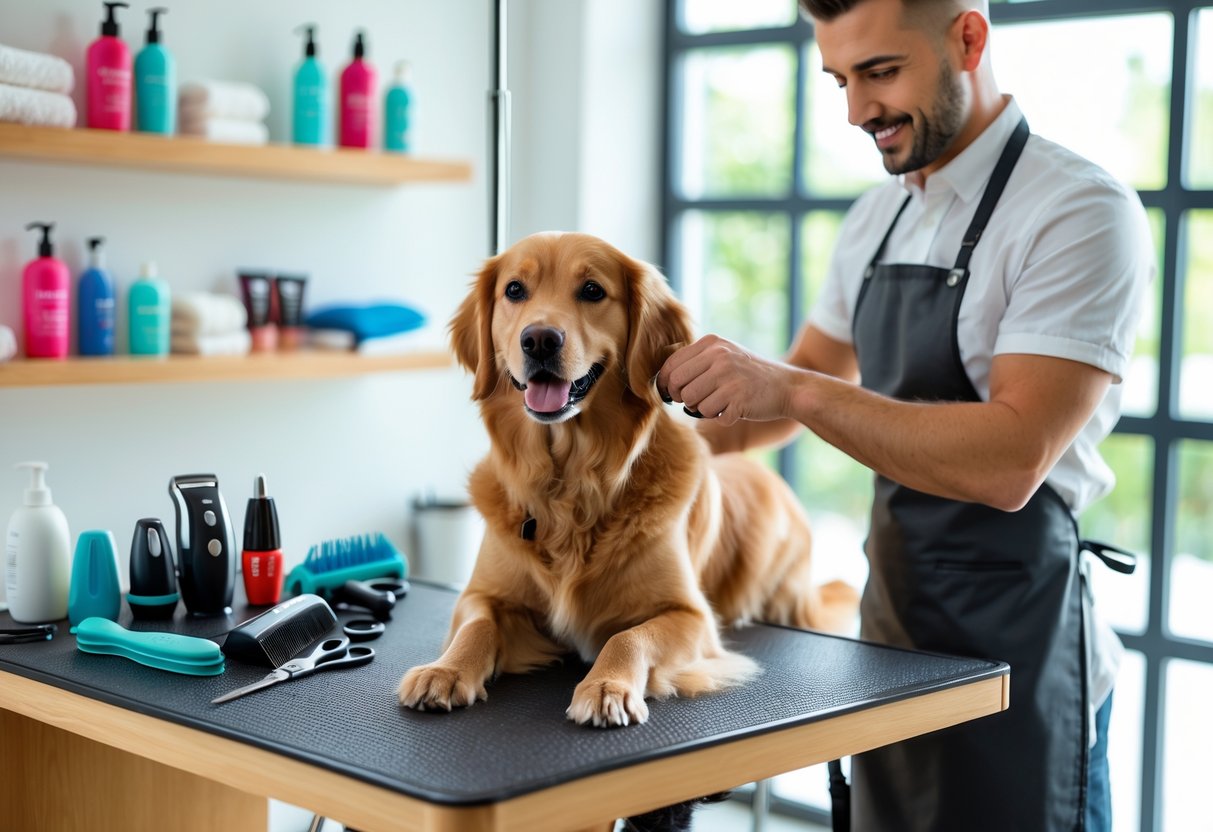
Using the proper grooming tools helps maintain a dog’s coat and skin in healthy condition. The right brushes and combs prevent tangles and mats, while safe grooming products protect the dog’s skin and overall health.
Selecting Brushes and Combs
Brushes and combs must match the dog’s coat type and length. For short-haired dogs, slicker brushes or rubber grooming gloves remove loose hair and dirt effectively. Long-haired dogs need pin brushes or wide-tooth combs to detangle and avoid matting.
Undercoat rakes work well for breeds with thick undercoats to reduce shedding. Brushing should be gentle but thorough, covering all parts to prevent skin irritation.
Regular use of appropriate brushes keeps the coat smooth, healthy, and free of debris. It also helps owners detect skin issues early.
Safe Grooming Products for Dogs
Choosing safe grooming products is essential to avoid skin problems. Dog shampoos should be pH-balanced specifically for dogs, which is different from human shampoo. Avoid products with harsh chemicals like sulfates or artificial fragrances.
Ear cleaners should be gentle and designed for canine ears to prevent infections. Nail clippers made for dogs must have safety features to avoid cutting too deeply.
Using the right products minimizes allergic reactions and keeps a dog’s skin clean and comfortable. Always follow product instructions to maintain safety during grooming.
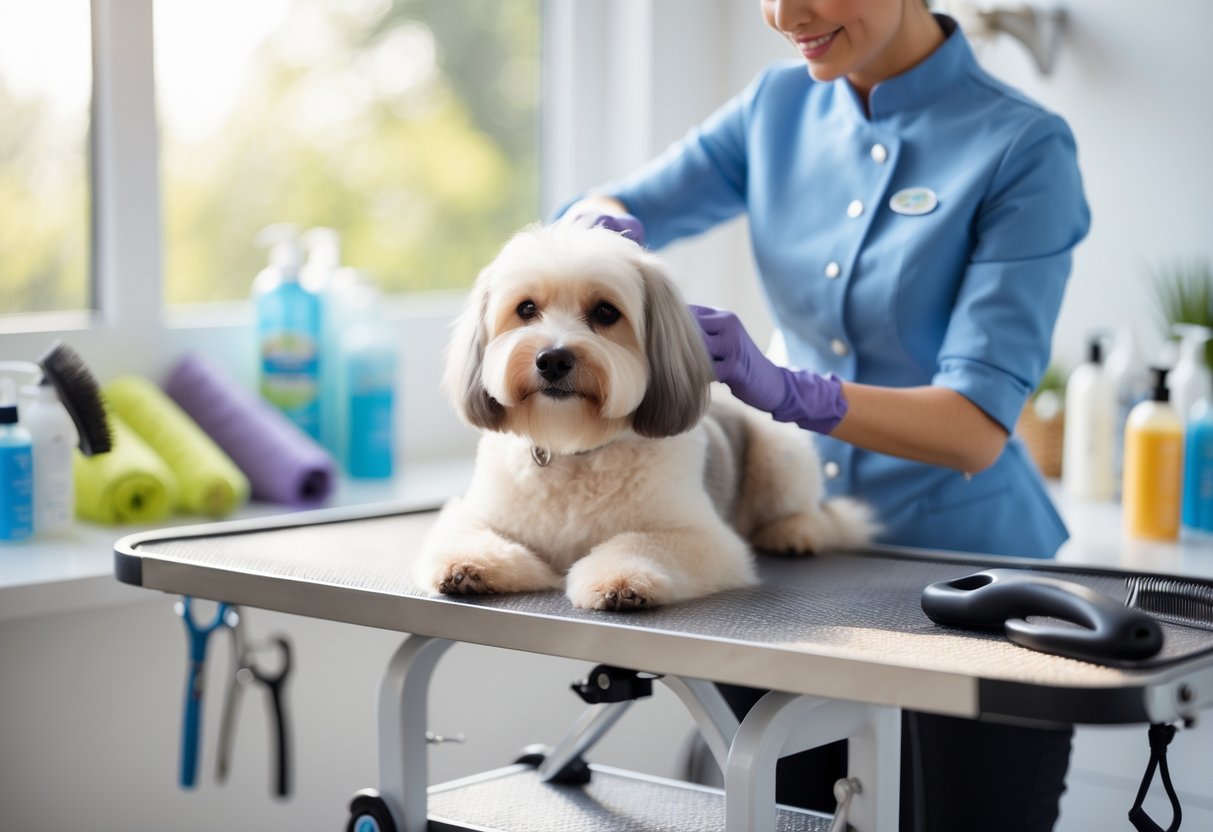
Frequently Asked Questions
Proper grooming requires the right tools, careful handling, and regular maintenance. Many owners want to know how to make grooming less stressful and more effective for their dogs.
